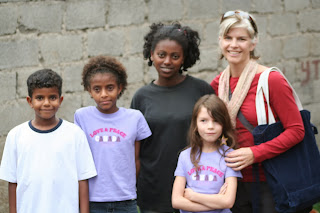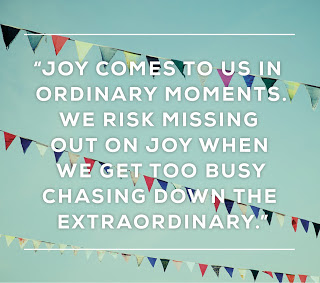I would like to tell you a little bit about my birth . . . but I don’t remember a thing. It must be due to aging.
Somehow, I got from that January day in 1966, to this day, Jan. 14th 2016.
I didn’t get here alone.
In counselling a few years ago, my psychologist introduced the concept of a “Circle of Support” to me. I think she wanted to ease my feelings that something was wrong with me because I needed (prolonged) counselling support. She told me that we all have a circle of support, and its members change through the ages and stages of life.
I liked the image it evoked: all of those who support me, connecting around me to form a complete circle. And each of them with circles of their own; me standing in support of them. The circle signifies so many things for me: rhythm, completeness, love, inclusivity, wholeness, the sun, and the moon.
My inner circle of support consists of family, friends, teammates, trainers, counsellors, mentors, teachers, facilitators, and specialists in health & well-being. And the outer circle of support consists of all the people who work to make my life easier and possible: farmers, city workers, gas station owners, drivers, repair and maintenance workers, those in the service industry, and many more.
I am blessed to have been born in Canada, to have family who love me, to have friends who accept me as I am, and to have my needs met abundantly. Another fortunate part of my life is that I have been able to travel to many different countries--at least a dozen--and I have witnessed alternate ways of living.
The “Loonie” year has taught me that habits are hard to break, and change happens slowly.
“Our mission is to build a better world. To leave no one behind. To stand for the poorest and the most vulnerable in the name of global peace and social justice.”
Ban Ki-moon, United Nations Secretary-General
Ban Ki-moon, United Nations Secretary-General
The world is still an inequitable place. But each year CHANGE happens, for example:
- The global under-five mortality rate continues to fall.(UNICEF)
- The number of people who are newly infected with HIV is continuing to decline in most parts of the world. (UNAIDS)
- Progress in stopping new HIV infections among children has been dramatic. Anti-retroviral medicines are becoming available to give to HIV pregnant mothers, so that the virus will not pass to her baby. (UNAIDS)
- The number of people living in extreme poverty (<$1.90/day) around the world is likely to fall to under 10 percent of the global population in 2015, according to World Bank projections released in October.
In 2015, I decided to make change. I dedicated a portion of my year to spending less money, and increasing my awareness about issues faced around the world. I wrote many blogs. I just counted them, and remarkably (and without planning) THIS is the fiftieth blog. How cool is that? Moreover, SEVENTEEN of you pledged your support to me, and my “cause” in some way. Thank you. Together we have made a difference.
Mostly, over the last 365 days, I learned how easy is was to fail, to not even try, to get up and just pretend that I wasn’t interested in poverty and disease in the world, to reach into the bottomless cup of coins, and buy a latté—just this once. Spending money on things that I didn’t need was way easier than stopping to reflect on my needs, and those of other people. I think that we all know what to do to end world hunger. But, knowing doesn’t translate into action—NOT when it doesn’t affect us every day.
Mostly, over the last 365 days, I learned how easy is was to fail, to not even try, to get up and just pretend that I wasn’t interested in poverty and disease in the world, to reach into the bottomless cup of coins, and buy a latté—just this once. Spending money on things that I didn’t need was way easier than stopping to reflect on my needs, and those of other people. I think that we all know what to do to end world hunger. But, knowing doesn’t translate into action—NOT when it doesn’t affect us every day.
But, even charting my failure felt like some small success. If nothing else, I paid attention. People were moved, and they contributed to lessening the burdens—just by bearing witness.
I am proud of what we have accomplished together. Canadian Humanitarian received financial pledges that wouldn’t have otherwise come their way, and that means that vulnerable and at-risk children will get the support they need to break the cycle of poverty.
(If you are interested in their work, or want to donate to their work, click this link.)
2013 - Ethiopia
I arrived at Kid’s Hope Centre in Guelele on my last afternoon in Ethiopia. Three of us were facilitating a sewing project with some of the older kids. This was my fourth time to Guelele in the last seven years. On our first trip in May of 2006, we were introduced to Canadian Humanitarian, and to a group of forty young children who were just learning about sponsorship. After some singing, dancing and playing games with the kids, I asked if there were any children there who still needed a sponsor.
We were introduced to Mekedes.
She was twelve or thirteen years old. She was a gangly teenager. She had a spark in her eyes, and a quick smile; she said that she wanted to be a doctor (they all did). The Guelele sub-city where she lived is a very poor area where local markets sell basic foods, old clothes and fresh produce. In 2005, a local NGO called YTH, partnered with Canadian Humanitarian to develop a community-based approach to caring for children in need.
 |
| Mekedes and me in May 2006 |
That year, Mekdes was identified as one of a hundred orphaned and vulnerable children in the Guelele area. Her parents had died. She lived with her grandmother, who also cared for four other children. Her grandmother was a day laborer, and her income was inconsistent. The family had to live without basic essentials. When there is not enough money, boys are sent to school and girls are kept home. It is the role of the girl to take care of younger children, chop wood, collect water, go to the market and help their mothers, aunts and grandmothers. In times of desperation, prostitution may be the only way to make a living. Adolescent girls are at great risk.
Canadian Humanitarian and YTH had resources (in 2005) to support fourty of those vulnerable children in the Kid’s Hope program, and Mekdes was chosen. Children were selected based on their personal circumstances, but also on the desire and motivation of the child.
Initially, the Kid’s Hope program provided the funds that allowed Mekdes to go back to her community school. It was a simple gift. However, over the ensuing years, Kids Hope has undertaken the challenge to break the cycle of poverty while helping children to find what they need to meet their unique potential. To increase the likelihood of success, CH uses a child-centered model that addresses the whole of the child’s life. This includes support in the areas of: education, family life, medical, dental, nutritional, social, emotional and mental support, life skills, programs for the guardians, research and expeditions that bring volunteers into the country.
 |
| Mekedes (left) in Feb. 2008 |
 |
| Mekedes, with me, Laurèn, Faven, and Yohannes, in October 2009 |
 |
| Mekedes in 2010 |
 |
| Mekedes in 2011 |
On my last day in Addis in 2013, I met the manager of the Kid's Hope Guelele Centre, and told him that I was part of the family who has supported Mekedes these past seven years. I knew that she had just started University, and he asked me if I wanted to phone her. He led me to his office and picked up the phone, dialed, made a number of requests in Amharic, and then simply handed me the phone.
“Hello,” I said.
“Hello,” she replied.
“Mekdes! This is Wendy from Canada!”
“Oh! Hello. How are you?”
“I am fine. How are you?”
“I am fine.”
“You are at university.”
“Yes.”
“Are you happy?”
“Yes.”
“I am in Addis right now, I am sorry that I will not see you.”
“You are in Addis?”
“Yes, I have been here for three weeks.”
“Oh. How is Kristine?”
“Kristin is fine. She is at university too. She is not here.”
“Oh. Okay.”
“Mekdes, I just want you to know that we are so proud of how hard you have worked.”
“Oh. (giggle) Okay. Thank you. I love you.”
“We love you too…. Continue to work hard. . . . Goodbye.”
“Okay. Goodbye.”
Faith is believing in something you can’t see.
Patience is waiting to see what will be revealed.
And wisdom is knowing that change is not always better, only different.

























































































